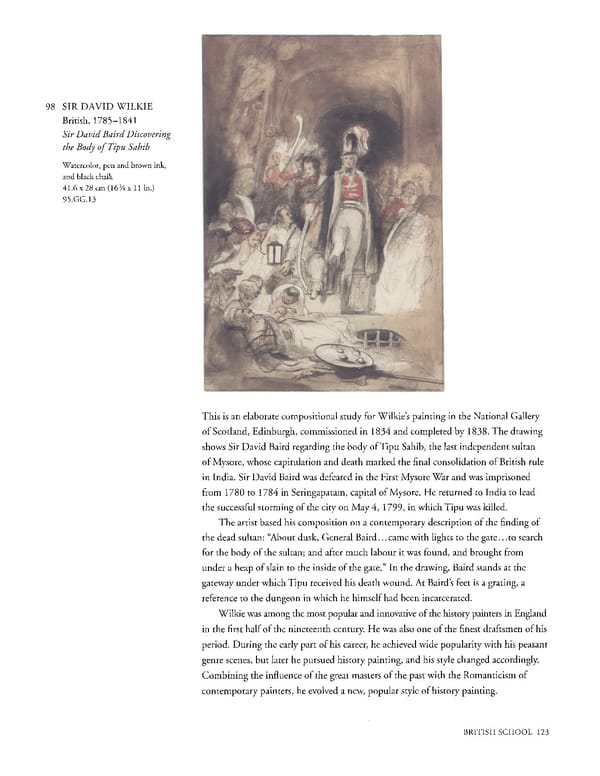98 SIR DAVID WILKIE British, 17851841 Sir David Baird Discovering the Body of Tipu Sahib Watercolor, pen and brown ink, and black chalk 41.6 x 28 cm (16 x 11 in.) 95.GG.13 This is an elaborate compositional study for Wilkie's painting in the National Gallery of Scotland, Edinburgh, commissioned in 1834 and completed by 1838. The drawing shows Sir David Baird regarding the body of Tipu Sahib, the last independent sultan of Mysore, whose capitulation and death marked the final consolidation of British rule in India. Sir David Baird was defeated in the First Mysore War and was imprisoned from 1780 to 1784 in Seringapatam, capital of Mysore. He returned to India to lead the successful storming of the city on May 4, 1799, in which Tipu was killed. The artist based his composition on a contemporary description of the finding of the dead sultan: "About dusk, General Baird... came with lights to the gate... to search for the body of the sultan; and after much labour it was found, and brought from under a heap of slain to the inside of the gate." In the drawing, Baird stands at the gateway under which Tipu received his death wound. At Baird's feet is a grating, a reference to the dungeon in which he himself had been incarcerated. Wilkie was among the most popular and innovative of the history painters in England in the first half of the nineteenth century. He was also one of the finest draftsmen of his period. During the early part of his career, he achieved wide popularity with his peasant genre scenes, but later he pursued history painting, and his style changed accordingly. Combining the influence of the great masters of the past with the Romanticism of contemporary painters, he evolved a new, popular style of history painting. BRITISH SCHOOL 123
 Masterpieces of the Getty Museum: Drawings Page 123 Page 125
Masterpieces of the Getty Museum: Drawings Page 123 Page 125